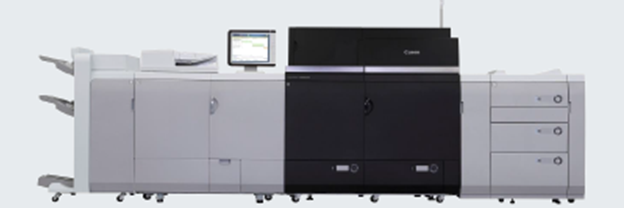Inkjet Wholesale News aims to provide updates on the latest significant occurrences in the field of printing. Whether it’s the launch of a new technology or volatility of market prices, we’ll be here to give you the lowdown on what happened, when it happened, and what it means!
HP Focuses on Marketing Its Subscription Based Instant Ink Service
 Subscription based services have been around for a long time. For instance, Netflix may have arrived in Australia only around eight years ago, it traces its origins multiple decades in the past to the US. Even within the print industry, subscription based services have been around. Managed Print Services (MPS) that corporates rely on consistently is nothing but an advanced form of subscription based service.
Subscription based services have been around for a long time. For instance, Netflix may have arrived in Australia only around eight years ago, it traces its origins multiple decades in the past to the US. Even within the print industry, subscription based services have been around. Managed Print Services (MPS) that corporates rely on consistently is nothing but an advanced form of subscription based service.
However, now such subscription based services have been offered to home and small office users too. In fact, HP has decided to focus heavily on its subscription based Instant Ink Service. The Instant Ink Service is being offered as an inherent part of its new series of inkjet printers – Envy and OfficeJet.
Earlier, HP’s printers would come out of the box Instant Ink Service “enabled”. That “enabled” has now changed to “ready”. The difference between the two is the extent of the registering process for the Instant Ink Service.
The registration process in the “enabled” inkjet printers was a little more involved, elaborate, and required the user to take the lead. The registration process of the “ready” inkjet printers means increased convenience for the user because it is part of the setup process of the printer.
In case you’re wondering what the Instant Ink Service really is, the gist is this. HP will require you to pay monthly subscription fees of anything between $3 and $10 depending upon how many pages you print in a month. The available customer plans include $3, $5, and $10 with the page limit being 50, 100, and 300.
The new HP printers which come Instant Ink Service “ready” have specialised cartridges that have a chip that lets HP know when ink is running low. When this happens, HP dispatches your cartridges to you. All of it sounds good but there are catches too.
For instance, you can’t overshoot the page limit of the plan that you’ve chosen. Suppose you have the $3 plan with a page limit of 50 and you print 51 in the month instead, you’ll have to pay a penalty.
The other downside is that if you don’t print often enough then you may end up saving a lot of money by simply buying an XL cartridge. Moreover, if you were to buy a compatible XL cartridge, then your savings are even higher.
The reason why HP’s lowest plan is for $3 and 50 pages is anyone’s guess. However, the company uses a study by InfoTrends to make its case. The study says that the average home user prints about 43 pages every month. How much that dovetails with your specific needs is for you to decide but we have a general distrust of generalisations.
One good thing about HP’s Instant Ink Service is that its cartridges are recyclable. The company provides envelops and you can simply mail the cartridges to them. There’s no fuss involved.
This is an environment friendly gesture but another reason for it could be the fact that the smart cartridges being used in these printers are pricey. In fact, estimates suggest that HP takes no less than three to five years to develop one cartridge. Even if that wasn’t the case, the components of the cartridges can most probably be salvaged and reused which is one of the basic tenets of recycling anyways.
Another angle worth considering is that when users know that their cartridges will be replaced with consummate ease, they may become freer with their printing. This is likely to be one of the things that HP is relying on to make its Instant Ink Service a success.
The most interesting part is that HP is claiming their Instant Ink Service to be one of the fastest growing “web based paid services”. Apparently, they have managed to gather about half a million subscribers in a matter of 20 months. In comparison, the erstwhile Netflix took about 30 months to achieve the same number.
Both, the Envy series and OfficeJet series of HP inkjet printers are modern machines boasting of all the bells and whistles such as Wi-Fi and mobile connectivity. The Envy series printers are specifically designed for home users while the OfficeJet series printers are for small to medium scale requirements.
Canon’s New C10000VP Colour Printer Boasts of 100 PPM Speed
 Canon’s ImagePress digital colour printers are very popular with their owners. One of the reasons why the ImagePress series of cut sheet colour digital printers are so popular with their users is their speed. The topmost model of the ImagePress series of printers used to have an impressive speed of about 80 ppm.
Canon’s ImagePress digital colour printers are very popular with their owners. One of the reasons why the ImagePress series of cut sheet colour digital printers are so popular with their users is their speed. The topmost model of the ImagePress series of printers used to have an impressive speed of about 80 ppm.
However, now Canon has upped the ante by introducing another ImagePress model at the top of its line. This new ImagePress model is the C10000VP. The ImagePress C10000VP improves upon the top printing speed of the service by another 20 ppm since it has a maximum speed of 100 ppm. This is the first Canon printer to have such a high speed of printing.
According to the Original Equipment Manufacturer (OEM), the ImagePress C10000VP is being introduced because the company has seen a rising demand for printers that are capable of printing above the 90 ppm mark without compromising on efficiency and quality.
The ImagePress C10000VP is primarily aimed at commercial printers. The maximum paper size this colour digital printer can accept is 330 x 762 mm at a resolution of 2,400 dpi. At the same time, this printer can also handle other specialised types of media such as synthetics. The monthly duty cycle of this device is in the range of 1.5 million pages.
The new ImagePress model uses the same toner as all its brethren, which is the Consistently Vivid toner. On the other hand, the C10000VP does have a reduced fusing temperature and a new developer unit, which combine to improve colour quality and accuracy.
The new ImagePress C10000VP will debut at the upcoming Canon Expo. The Canon Expo is due to be held in Paris, France in the middle of the next month.
Leave a Reply